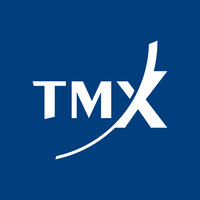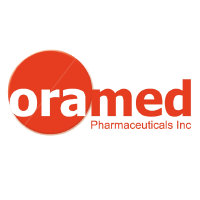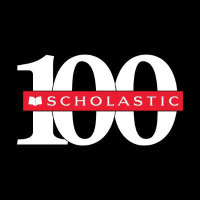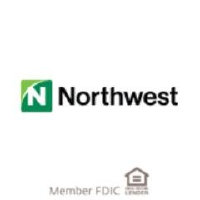
TMX Group Ltd
TSX:X


| US |

|
Johnson & Johnson
NYSE:JNJ
|
Pharmaceuticals
|
| US |

|
Berkshire Hathaway Inc
NYSE:BRK.A
|
Financial Services
|
| US |

|
Bank of America Corp
NYSE:BAC
|
Banking
|
| US |

|
Mastercard Inc
NYSE:MA
|
Technology
|
| US |

|
UnitedHealth Group Inc
NYSE:UNH
|
Health Care
|
| US |

|
Exxon Mobil Corp
NYSE:XOM
|
Energy
|
| US |

|
Pfizer Inc
NYSE:PFE
|
Pharmaceuticals
|
| US |

|
Palantir Technologies Inc
NYSE:PLTR
|
Technology
|
| US |

|
Nike Inc
NYSE:NKE
|
Textiles, Apparel & Luxury Goods
|
| US |

|
Visa Inc
NYSE:V
|
Technology
|
| CN |

|
Alibaba Group Holding Ltd
NYSE:BABA
|
Retail
|
| US |

|
JPMorgan Chase & Co
NYSE:JPM
|
Banking
|
| US |

|
Coca-Cola Co
NYSE:KO
|
Beverages
|
| US |

|
Walmart Inc
NYSE:WMT
|
Retail
|
| US |

|
Verizon Communications Inc
NYSE:VZ
|
Telecommunication
|
| US |

|
Chevron Corp
NYSE:CVX
|
Energy
|
Utilize notes to systematically review your investment decisions. By reflecting on past outcomes, you can discern effective strategies and identify those that underperformed. This continuous feedback loop enables you to adapt and refine your approach, optimizing for future success.
Each note serves as a learning point, offering insights into your decision-making processes. Over time, you'll accumulate a personalized database of knowledge, enhancing your ability to make informed decisions quickly and effectively.
With a comprehensive record of your investment history at your fingertips, you can compare current opportunities against past experiences. This not only bolsters your confidence but also ensures that each decision is grounded in a well-documented rationale.
Do you really want to delete this note?
This action cannot be undone.

| 52 Week Range |
42.75
57.98
|
| Price Target |
|
We'll email you a reminder when the closing price reaches CAD.
Choose the stock you wish to monitor with a price alert.

|
Johnson & Johnson
NYSE:JNJ
|
US |

|
Berkshire Hathaway Inc
NYSE:BRK.A
|
US |

|
Bank of America Corp
NYSE:BAC
|
US |

|
Mastercard Inc
NYSE:MA
|
US |

|
UnitedHealth Group Inc
NYSE:UNH
|
US |

|
Exxon Mobil Corp
NYSE:XOM
|
US |

|
Pfizer Inc
NYSE:PFE
|
US |

|
Palantir Technologies Inc
NYSE:PLTR
|
US |

|
Nike Inc
NYSE:NKE
|
US |

|
Visa Inc
NYSE:V
|
US |

|
Alibaba Group Holding Ltd
NYSE:BABA
|
CN |

|
JPMorgan Chase & Co
NYSE:JPM
|
US |

|
Coca-Cola Co
NYSE:KO
|
US |

|
Walmart Inc
NYSE:WMT
|
US |

|
Verizon Communications Inc
NYSE:VZ
|
US |

|
Chevron Corp
NYSE:CVX
|
US |
This alert will be permanently deleted.
TMX Group Ltd
In the bustling financial landscape of Canada, TMX Group Ltd. stands as a cornerstone in the orchestration of market activities, embodying a rich history of facilitating capital formation and exchange. Headquartered in Toronto, TMX Group operates key exchanges such as the Toronto Stock Exchange (TSX) and the TSX Venture Exchange, which serve as pivotal platforms for companies looking to raise capital. These exchanges are instrumental in connecting businesses with investors, encompassing an extensive range of sectors from mining to technology. It creates a symbiotic environment where companies seeking to grow can connect with investors looking for potential returns. Furthermore, TMX Group extends its reach beyond mere listings, providing a suite of services including market data analytics and clearing and settlement solutions, which enhance the overall market efficiency and reliability.
At the core, TMX Group's revenue stream is multifaceted, drawing from several well-established channels. Listing fees form a significant part of the income, charged to companies for initial public offerings (IPOs) and maintaining their status on the exchange. On top of this, transaction-based revenue flows in from the buying and selling of securities across its platforms, showcasing TMX's role as a central hub for trading activities in Canada. Additionally, TMX leverages its treasure trove of market data, offering critical insights to market participants, which is a growing revenue segment in the information age. The group also benefits from providing clearing services, ensuring the seamless execution of trades while managing risks associated with trading. This diversified model not only secures its financial standing but also cements its role as a pivotal institution in maintaining the health and vibrancy of Canada's financial markets.

In the bustling financial landscape of Canada, TMX Group Ltd. stands as a cornerstone in the orchestration of market activities, embodying a rich history of facilitating capital formation and exchange. Headquartered in Toronto, TMX Group operates key exchanges such as the Toronto Stock Exchange (TSX) and the TSX Venture Exchange, which serve as pivotal platforms for companies looking to raise capital. These exchanges are instrumental in connecting businesses with investors, encompassing an extensive range of sectors from mining to technology. It creates a symbiotic environment where companies seeking to grow can connect with investors looking for potential returns. Furthermore, TMX Group extends its reach beyond mere listings, providing a suite of services including market data analytics and clearing and settlement solutions, which enhance the overall market efficiency and reliability.
At the core, TMX Group's revenue stream is multifaceted, drawing from several well-established channels. Listing fees form a significant part of the income, charged to companies for initial public offerings (IPOs) and maintaining their status on the exchange. On top of this, transaction-based revenue flows in from the buying and selling of securities across its platforms, showcasing TMX's role as a central hub for trading activities in Canada. Additionally, TMX leverages its treasure trove of market data, offering critical insights to market participants, which is a growing revenue segment in the information age. The group also benefits from providing clearing services, ensuring the seamless execution of trades while managing risks associated with trading. This diversified model not only secures its financial standing but also cements its role as a pivotal institution in maintaining the health and vibrancy of Canada's financial markets.
Strong Revenue Growth: TMX reported its fifth consecutive quarter of double-digit revenue growth, with Q3 revenue up 18% year-over-year to $418.6 million.
EPS Acceleration: Diluted earnings per share jumped 43% to $0.43, while adjusted diluted EPS rose 27% to $0.52 compared to last year.
Operating Leverage: TMX achieved double-digit positive operating leverage, as 17% organic revenue growth outpaced a 7% rise in comparable operating expenses.
Broad-Based Performance: Growth was strong across all major business lines, especially in derivatives, Global Insights (VettaFi, Trayport, Datalinx), and equities trading.
Strategic Acquisitions: TMX expanded its portfolio with the acquisition of Verity in October and several niche indices for VettaFi, reinforcing cross-sell and product development opportunities.
Record Market Capitalization: TSX and TSX Venture market cap reached a record $6 trillion, with mining sector capitalization hitting $1 trillion for the first time.
Dividend Maintained: Quarterly dividend held at $0.22 per share, maintaining a 42% payout ratio within the company’s target range.
AI and Technology Focus: Management emphasized ongoing AI adoption, productivity tools, and technology investments as key to future growth and resilience.













































